TEQUILA AND MARIACHI OLÉ!
by Margaret Deefholts
(For Travel Writers' Tales )
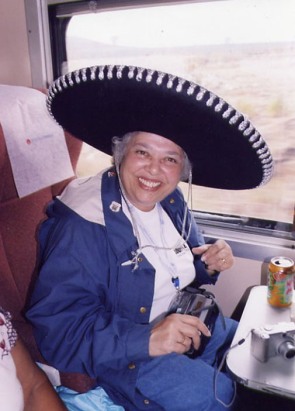
On board the Tequila Express
The weather is hot, the music is hotter and the tequila…well the tequila is fiery! The crowd on the dance floor stomp and whirl. A young man with gleaming black hair, swings his partner around to face him and they come together in a perfectly synchronized tango. The floor clears, and the audience clap to the tempo. The music changes to a throbbing rock-n-roll beat, and another couple erupt into a classic 50s style jive. The third time around it's a sensuous Latin number, and the dancers move with fluid grace. And so it goes, one after another. A dance competition, interspersed with rounds of less professional—but no less enthusiastic—dancers, myself included, jamming the floor. Eventually we retire to our seats, exhilarated, dripping with perspiration, and grateful for the break.
We are at the Hacienda San Jose del Refugio in Jalisco , Mexico , and following a lavish luncheon buffet, the entertainment has included folkloric dances and exhibitions of juggling and lassoing skills—all of which are part of our day's program.
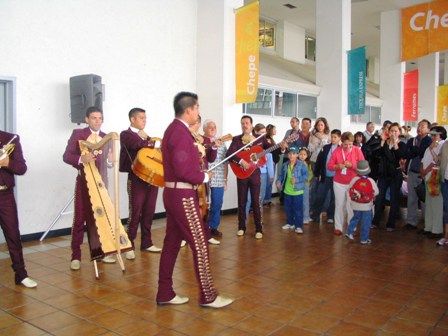
Welcome to Mexico
Mariachi performers at Guadalajara station
The trip had started early that morning at the railway station in Guadalajara where, serenaded by Mariachi musicians, we'd boarded our assigned compartments. The train moved at a leisurely pace, and beyond my window, fields pimpled with row upon row of spiky blue-leafed agave plants, stretched to the distant horizon. It is their fermented juice that is distilled into Jalisco's most well known tipple—tequila
Tequila, as I discover to my surprise, is not merely a raw country-hooch produced in backyard distilleries. First drunk as a fruit juice by the Tequili Indians (who imbued it with legendary and mystical properties), it was the Spanish who distilled the agave's sugar content into alcohol. Since then, the cultivation and production of tequila has become both a source of income and a way of life for generations of Mexicans. As a sophisticated liqueur, it also wears the mantle of proud tradition.
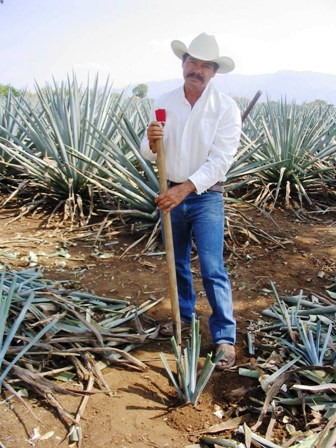 |
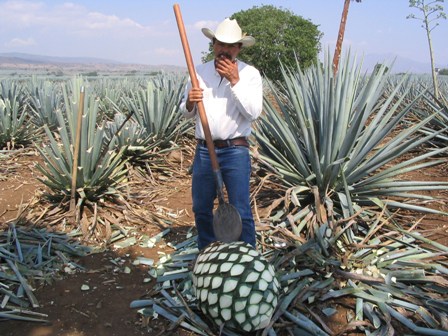 Jimador in a field of blue agave Jimador in a field of blue agave |
A day previous to my trip on the Tequila Express, along with the manager of Jose Cuervo, unquestionably one of Mexico's oldest and most prestigious breweries, a group of us watch a Van Gogh painting come to life: a jimador, (harvester), stands under a blazing sun, in a field of blue agave, his wide-brimmed hat tilted down over his eyes. He swings a sharp coa expertly slashing leaves away from a ten-year old ripened agave plant reducing it to a pi ñ a —an immense green pineapple. “Look across there,” our host says squinting at a mountain on the horizon. “That's the Tequilan volcano, and its rich soil is why blue agave thrives here in Jalisco.”
At the Jose Cuervo factory the heady, sweet smell of roasted pi ñ a lies thick on the air. This is where the sugar is extracted and distilled, the whole process being overseen by a professional Tequila Master before being branded with a seal of excellence. Our host leads the way into a dim, cool cellar where rows of casks line the walls. He pours us each a shot of Jose Cuervo's Reserva de la Familia . From a secret Cuervo family recipe to celebrate their 200 th anniversary in 1995, it is specially aged tequila, bottled for a very select clientele. It is as potent and smooth as a fine cognac. “It would be sacrilege to mix this into a Margarita!” I comment. Our host nods, adding that there are other varieties of tequila, (earthy and strong as the Mexican temperament!), which are ideal for that purpose.
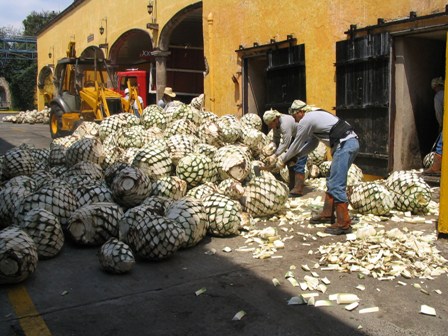
Tequila pi being unloaded at Jose Cuervo factory
Intoxicating, as tequila is, so too is Jalisco's other gift to the world: Mariachi music. Today, as a grand finale before we board our homeward bound Tequila Express, Mariachi performers take centre stage, playing popular hits: La Bamba, Maleguena and La Cucaracha. The musicians' costumes are flamboyant—gold buttons on their embroidered maroon waist-length jackets, silk cravats and tight fitting pants tapering to riding boots. Women wearing shawls and colourful sequinned skirts tap their heels and swirl their way through the traditional Mexican Hat Dance.
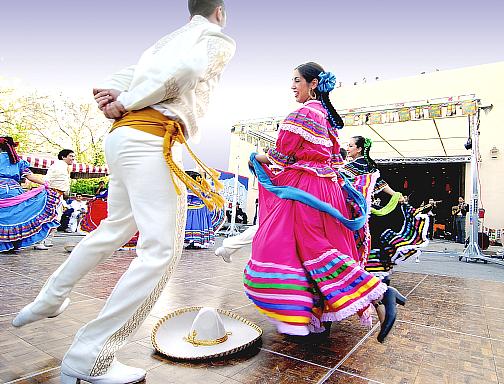
Dancers performing the traditional Mexican Hat Dance (courtesy Wikipedia)
And then a singer joins them, her voice catching on a sob. She sings well-loved folk songs—they tell of heartbreak and betrayal, tragedy and loss. Everyone knows the songs. Everyone sings along, their voices swelling with nostalgia and emotion. It is music that embodies the soul of Mexico and its heartbeat. The final melody lingers softly on the evening air, and dies away into silence. The crowd is hushed for a moment, before exploding into a riot of clapping and cheering.
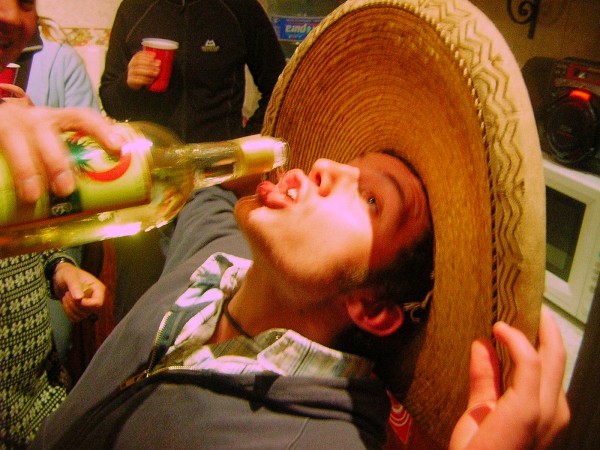
Tequila ole! (courtesy Wikipedia)
And then everyone knocks back another shot of tequila.
_______________________________________
Travel Writers' Tales is an independent newspaper syndicate that offers professionally written travel articles to newspaper editors and publishers. To check out more, visit www.travelwriterstales.com
IF YOU GO:
For more information on Tequila and the Jose Cuervo enterprise go to http://www.cuervo.com/
PHOTOS by Margaret Deefholts unless otherwise attributed.